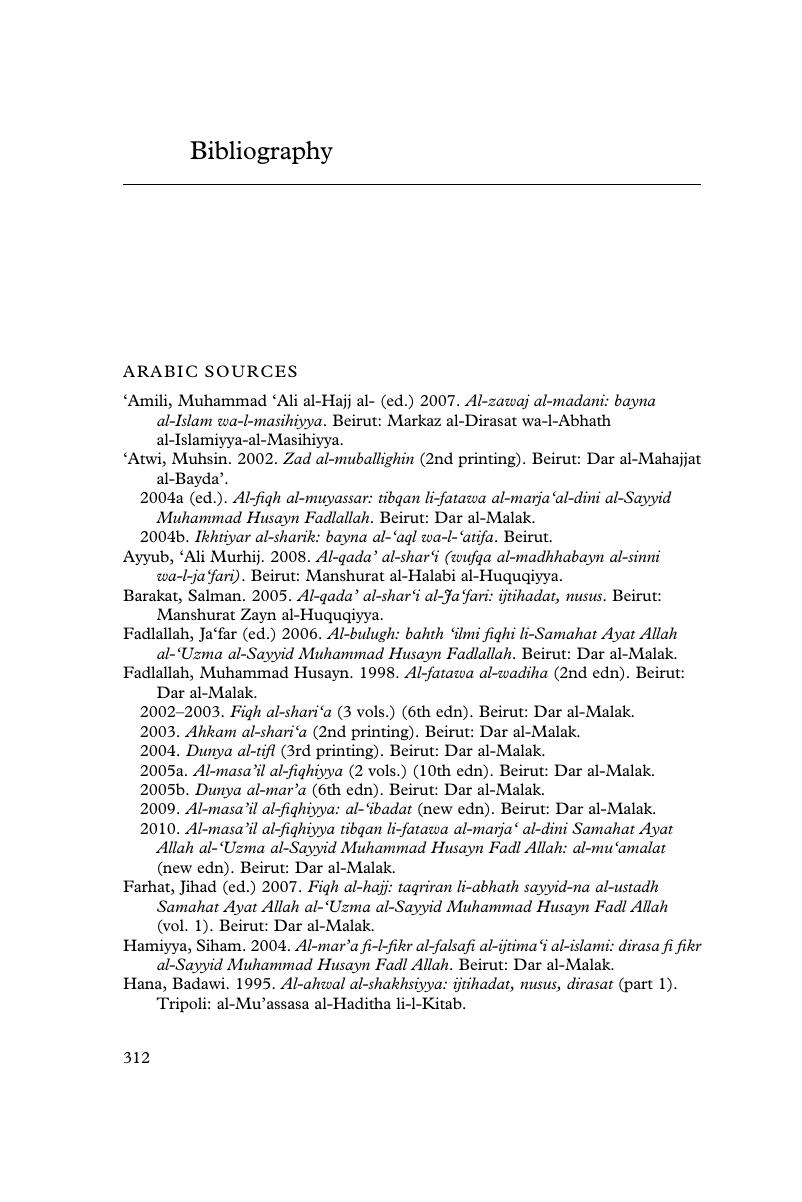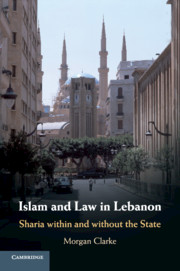Book contents
- Islam and Law in Lebanon
- Islam and Law in Lebanon
- Copyright page
- Dedication
- Contents
- Tables
- Acknowledgements
- Note on Transliteration
- Introduction
- Part I Contextualising Sharia Discourse in Lebanon
- Part II Sharia within the State
- Part III Sharia outside the State
- Conclusion
- Bibliography
- Index
- References
Bibliography
Published online by Cambridge University Press: 07 June 2018
- Islam and Law in Lebanon
- Islam and Law in Lebanon
- Copyright page
- Dedication
- Contents
- Tables
- Acknowledgements
- Note on Transliteration
- Introduction
- Part I Contextualising Sharia Discourse in Lebanon
- Part II Sharia within the State
- Part III Sharia outside the State
- Conclusion
- Bibliography
- Index
- References
Summary

- Type
- Chapter
- Information
- Islam and Law in LebanonSharia within and without the State, pp. 312 - 331Publisher: Cambridge University PressPrint publication year: 2018



